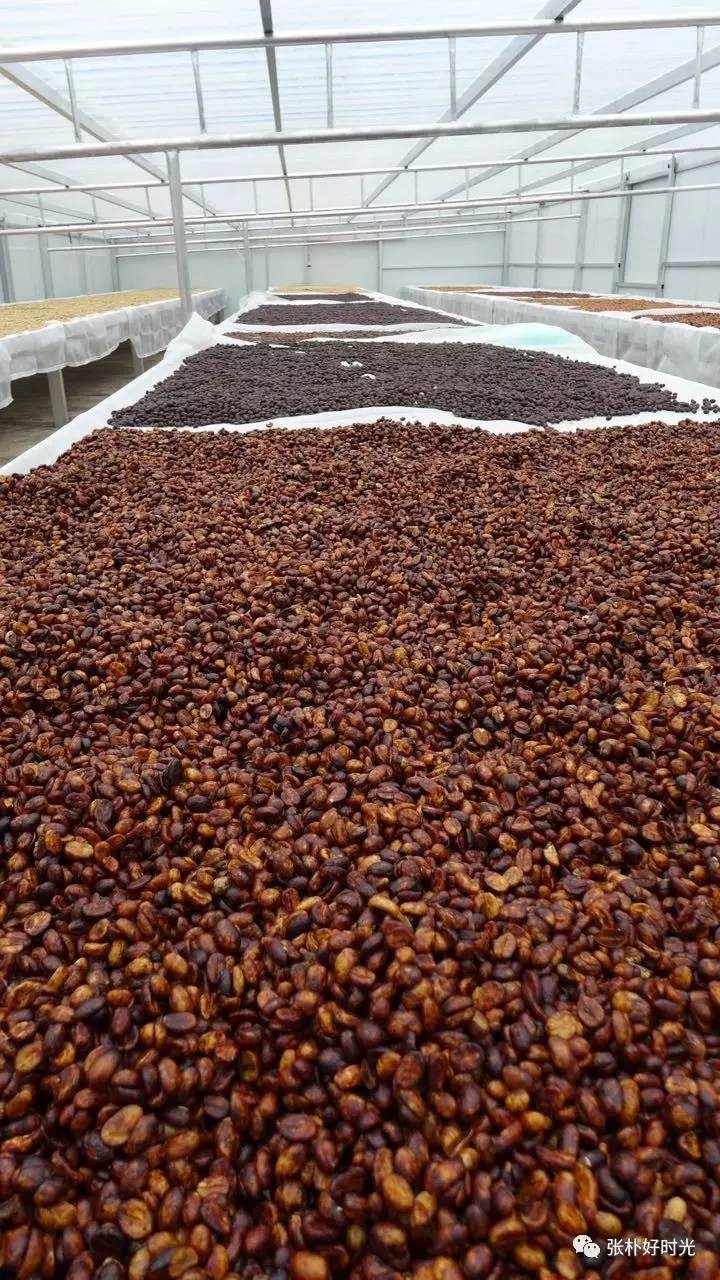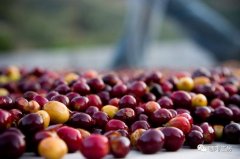Talking about Coffee: travel Notes of Coffee Farm published

Professional barista communication, please pay attention to coffee workshop (Weixin Official Accounts cafe_style )
“God bless you, Patrick.”Luis, owner of the Nicaragua Providence Estate, is a devout Catholic, as can be seen from his behavior and kindness towards workers during the few days with him. He blessed me because I announced on Facebook that I would donate 50% of the proceeds from my travel sales to a local children's charity called Fundacion de Ninos Un Corazon para Amar.
The story of coffee beans before they enter the bag
This is the first time anyone has published a travelogue on the subject of coffee upstream. My goal is to enhance the understanding of the downstream industry to the upstream industry chain, and through the interview photography to let the public spy on the story of coffee beans before entering the bag. As far as I know, this travel book is the world's first printed photo collection shot purely with Leica monochrom cameras. During this trip to Central America, I only used a 35mm lens with the nickname "Seven Jade". Since the purpose of photography is not aesthetic appreciation, the post-production is also based on the principle of storytelling. Please forgive me photographers.
Three months had passed since my visit to the farm. Coffee shops in the city do the same thing: the layout is still the same, the air conditioning is always on, and colleagues quietly participate in purchasing raw beans, baking, brewing, and communicating with customers. The only evidence of the passage of time may be the seasonal menu of special drinks. In June, I believe that the coffee trees in the valley have returned to green from red with fruits; after a while, the branches will be covered with white flowers and fragrance everywhere. Of course, the scene in the eyes of farmers will not be so romantic, but relying on the laws of nature's four seasons to work is something that many city people have never experienced in their poor lives.
In the long industrial chain, coffee has changed from a seed to a tree, from harvest to processing, and then from roasting to extraction, through countless hands of the same industry. This trip made me realize that I am not the only one who is curious about the industrial chain. Farmers also want to know how their coffee will be interpreted and appreciated by consumers on the other side of the world. For example, they know that the highest density beans are the best, that is, they sell well, but they know nothing about the difference between good and bad beans in taste or how to bake them. I used a local sample roaster to demonstrate how sun-cured coffee was roasted in my shop, and after tasting it, they were amazed and exclaimed,"So we grow coffee that tastes like this." I promised to mail them a set of hand brewers and funnels so farmers could taste the delicious coffee they grew.
Of course, they weren't the only ones amazed. The author and his team members saw farmers skillfully using geographical location and limited natural resources to bring the potential of fruits into full play. Especially in small family-run farms, where the meat beater is covered with rust, the sink is next to the kitchen sewer, and there is no tap water for cleaning, but bottled water! But a lot of the winners at nationals are small farms. Perhaps passion and concentration are the secret ingredients of quality.
Every farm has a different view of coffee, some hereditary, some refined. They will make moving works with limited facilities to match the weather of the season. And fine coffee most avoid defective beans. We spent the whole morning sifting only a few hundred grams of coffee before we realized that flawless coffee was not something to be taken for granted. It involved a lot of manpower and resources, as well as the dedication and dignity of farmers to their products.
The best coffee shops around the world send regular visits to the farm. In addition to purchasing, it will also explore market trends or discover new varieties. Seeing that many operators have regarded it as a routine of "picking goods", the author wants to open his eyes a little bit: every farm has its story worthy of detail.
From Seed to Cup. A Photojournal of Nicaraguan Coffee Farms($380)
Written by Patrick Tam
Published by Knockbox Company Ltd.
facebook:www.facebook.com/Knockboxcoffee
Text: Patrick Tam (Knockbox Owner, American Boutique Coffee Association, European Boutique Coffee Association Certified Barista, American CQI Certified Cup Tester, Cup of Excellence First Hong Kong Judge)
Important Notice :
前街咖啡 FrontStreet Coffee has moved to new addredd:
FrontStreet Coffee Address: 315,Donghua East Road,GuangZhou
Tel:020 38364473
- Prev

Rwanda Coffee Review Log: export difficulties
Professional barista communication Please follow the coffee workshop (Wechat official account cafe_style) since everyone thinks that No. 6 coffee beans are delicious, and the potato flavor defect that led to its elimination is only an accident, let's buy this unsuccessful batch. Such a good coffee is not worth being sold as commercial grade! Dean of the Vienna Coffee Institute (Vienna School of Coffee)
- Next

Map of Coffee World (Preface)
Professional baristas Please follow the people who used to be in the coffee shop (official Wechat account cafe_style) who believed that the earth was flat: the world had an end, and if you sailed there, you would fall into the abyss with a waterfall. This set of ideas is intermingled with superstition, religion and fantasy. It was not until the scientific knowledge matured that people gradually accepted that they had lived on the sphere for generations. Overthrow coffee is bitter
Related
- Does Rose Summer choose Blue, Green or Red? Detailed explanation of Rose Summer Coffee plots and Classification in Panamanian Jade Manor
- What is the difference between the origin, producing area, processing plant, cooperative and manor of coffee beans?
- How fine does the espresso powder fit? how to grind the espresso?
- Sca coffee roasting degree color card coffee roasting degree 8 roasting color values what do you mean?
- The practice of lattes: how to make lattes at home
- Introduction to Indonesian Fine Coffee beans-- Java Coffee producing area of Indonesian Arabica Coffee
- How much will the flavor of light and medium roasted rose summer be expressed? What baking level is rose summer suitable for?
- Introduction to the characteristics of washing, sun-drying or wet-planing coffee commonly used in Mantenin, Indonesia
- Price characteristics of Arabica Coffee Bean Starbucks introduction to Manning Coffee Bean Taste producing area Variety Manor
- What is the authentic Yega flavor? What are the flavor characteristics of the really excellent Yejasuffi coffee beans?

